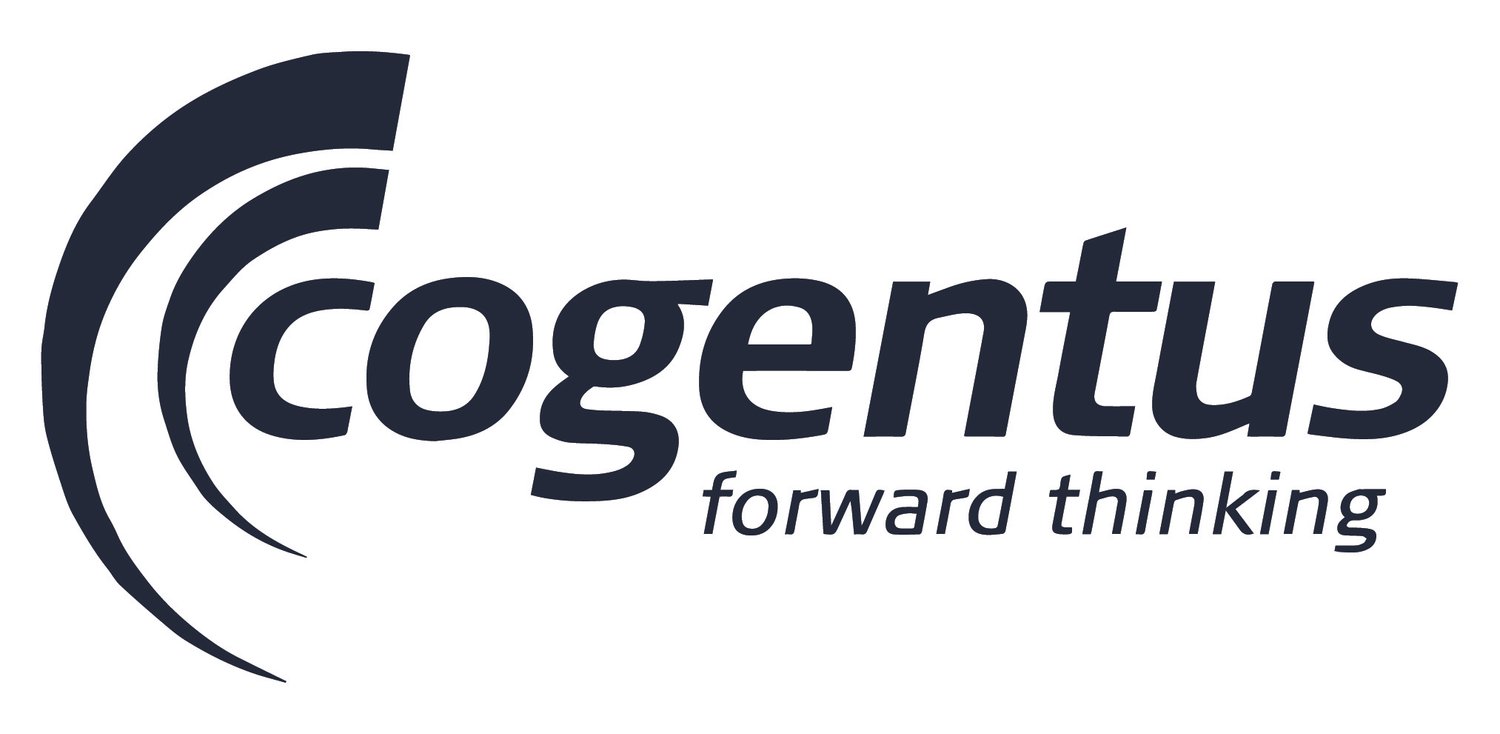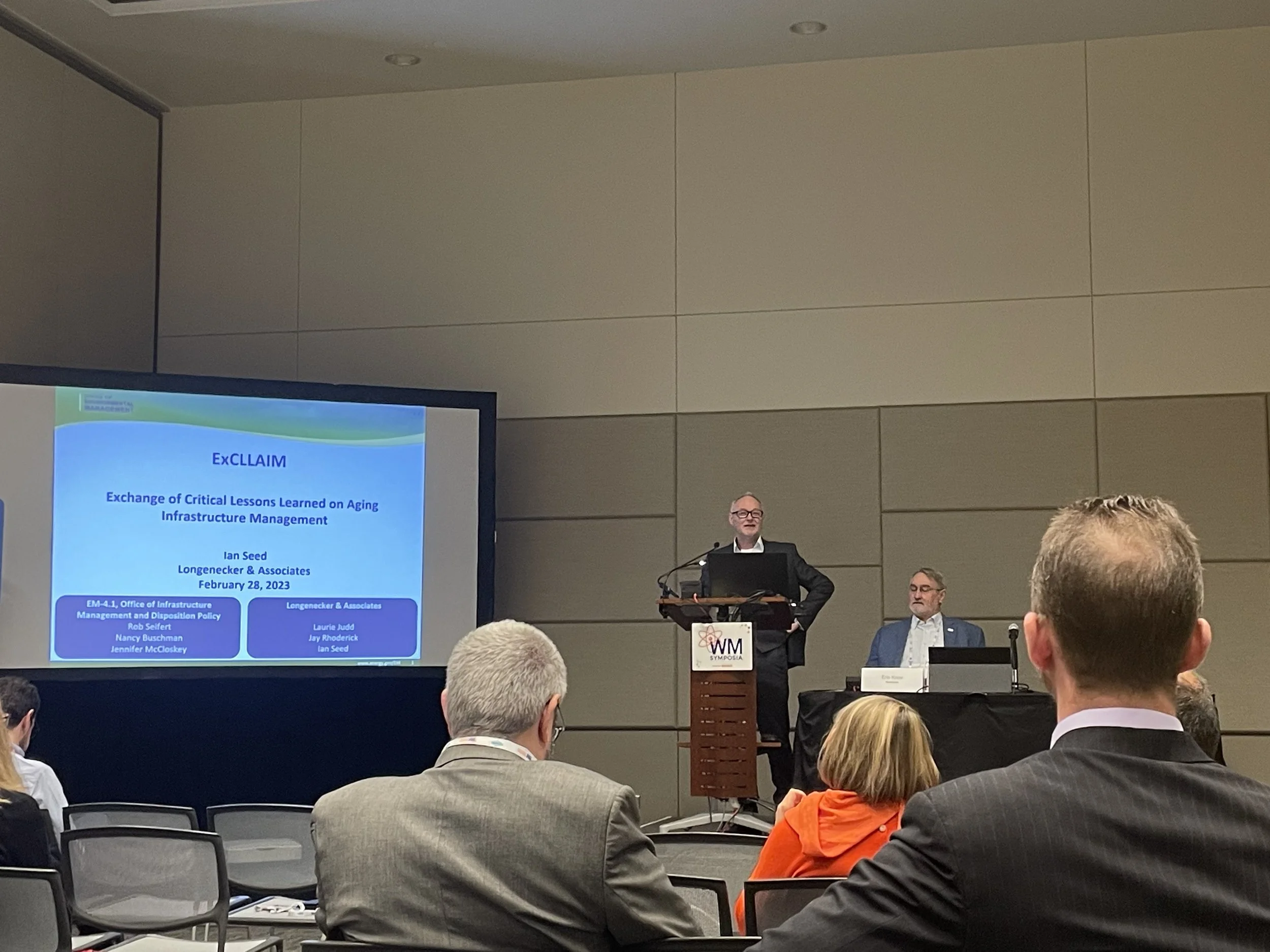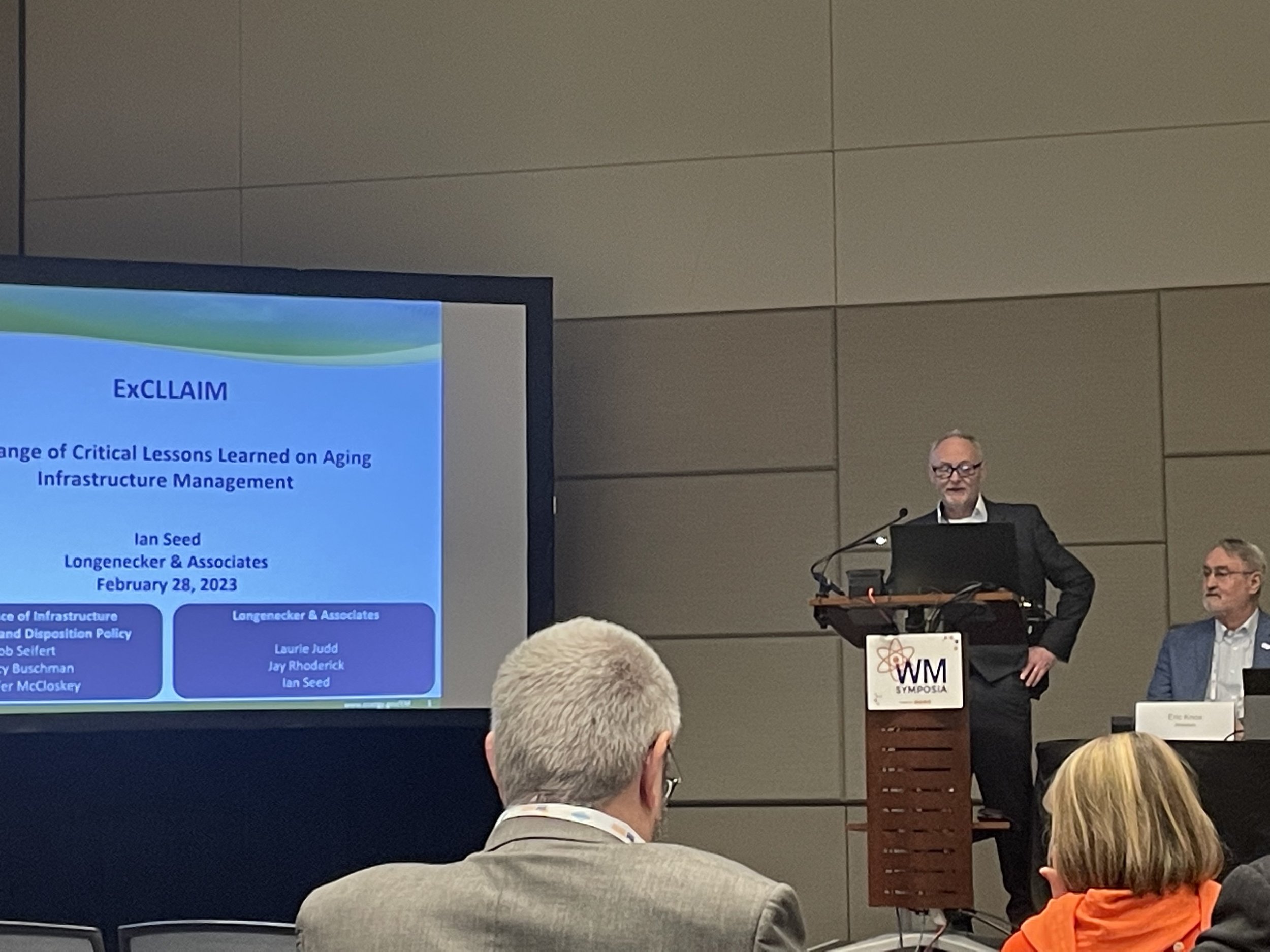Last week I was in Phoenix attending WM Symposia, Inc. Attendance was the largest it had ever been and France was the featured country. As well as a featured country, the conference also had a featured topic. This year it was on progress and innovations in clean up across the DOE complex featuring the management of liquid radioactive tank waste. There were papers, posters and panels describing research, development, and operational experience covering the compete spectrum of radioactive waste management and related topics as well as a full and interesting exhibit hall.
On Tuesday, I gave a presentation on the progress made by DOE-EM to ensure its infrastructure is effective in meeting the long-term mission need. In August 2022, we had a workshop for sharing lessons learned involving three countries, 45 participants and 19 organizations (including DOE-EM, NNSA, AECL and NDA). The presentation will cover the workshop objectives, where we've come from, how it was designed for information sharing and showing the key outcomes. It will also explain the work done after the workshop to continue the discussions on a range of topics that are designed to improve the management of aging infrastructure across all three countries.
Day 1
The conference started with a plenary session with presentations from senior people from the USA and France.
Jennifer Granholm, Secretary of Energy, US DOE
Sophie Mourlon, French Director of Energy, Ministry of Energy Transition
Jean-Francois Nogrette, CEO Veolia France
Ike White, Senior Advisor for Environmental Management, US DOE EM
A packed plenary session
Morning Sessions
As usual there are far too many concurrent sessions to go to them all, so you have to pick and choose. In my case, I focused on sessions that mainly covered collaboration activities as well as ones we have been directly involved with during the year. The first session I attended was "US-France Collaboration In Radioactive Waste Management". Patrick Landais (High Commissioner to Atomic Energy, CEA) gave the introduction to the session which was followed by a number of presentations, some of which I have summarised below:
US/ France Collaboration on Radioactive Waste Management by Sunil Felix (French Embassy). He explained that France and the US share a long standing collaboration relationship in the field of civil nuclear energy in all three sectors: R&D, Industrial and Regulatory, covering a wide range of topics along with waste management. He presented on the main and current cooperation programs along with prospects for new collaboration areas, and the value to be gained for both sides.
MCRE: Importance of Molten Salt Reactor in Pu Management by Arnaud Gay (Orano). He discussed the thought that plutonium is only waste if you waste it. Molten salt reactor fuel cycles can be an important part of productive plutonium management. This discussion explored the Molten Chloride Reactor Experiment (MCRE) which was the world’s first critical fast-spectrum salt reactor and France’s interest in molten salt reactors (MSRs) as part of its “2030” advanced reactor program.
HLW Vitrification by Connie Flohr (Idaho Cleanup Project). Connie presented on the collaboration between France and the US on nuclear waste vitrification and discussed opportunities for US waste immobilization projects to consider other proven HLW vitrification technologies used in France and deployed on a commercial basis.
The show floor was also opened and this included some technology & innovation demonstrations - sponsored by Cavendish Nuclear. This included demos by H3D, Inc. and Commissariat a l'Energie Atomique et aux Energies Alternatives. H3D has a number of imaging spectrometers and associated software; you can see their entries in the Idea Catalog here. CEA, of course, is the French public government-funded research organisation. They have a large number of entries in the Idea Catalog here).
Afternoon Sessions
After lunch I attended the session run by fred sheil on "D&D of Nuclear and Non-Power Generating Facilities Both Large and Small". There were a lot of presentations, some of which I have summarised below:
Marcoule UP1 MAR200 Use of Remotely Handled Equipment Associated with Laser Cutting for Spent Fuel Dissolver Dismantling by Jean-François Weiss (CEA)
Overview of the APM High Active Reprocessing Facility Dismantling Project in CEA Marcoule by Denis Espinoux (CEA) ,
Using a High Purity Germanium Imaging System in Support of D&D Planning for Nuclear Facilities by Adam Caswell (UCOR)
Robot Assisted Laser Cleaning of Radioactive Surfaces by Rez Mani (Allied Scientific Pro)
Learning from Waste Treatment Active Demonstrators at Sellafield by Eryk Ryzko (Sellafield Ltd)
There were more technology & innovation demonstrations this afternoon, again sponsored by Cavendish Nuclear. This time Orano demonstrated a number of different tools for waste handling (see their entries in the Idea Catalog here) and Mirion Technologies (Canberra) KK who gave a live demo of SPOT (see their entries in the Idea Catalog here).
The exhibit hall was very busy with more stands than in previous years. The small businesses were in a much better position as well. Clifton Photonics was one such company who flew over from the UK to showcase their ramen spectrometer (see it here in the Idea Catalog).
In the evening there was the French Evening Reception where attendees could mingle and chat with the French exhibitors. The food provided food was (sort of) French too - Chicken Cordon Bleu. A great first day.
Day 2
It was an early start today as all presenters have to attend a breakfast briefing at 7:00 AM. It was good to meet the other presenters and to catch up with Eric and Craig again.
Morning Sessions
The first session I attended was the panel on the featured theme: Liquid Tank Waste Treatment – Path to EM Mission Completion. It discussed the critical role tank waste treatment serves in overall EM mission completion for three of the largest and most complex clean up sites (Savannah River, Hanford and Idaho). Tank waste disposition represents the largest EM liability and senior managers from DOE-EM described the role and importance of tank waste treatment in the overall site closure programs. Mike Budney (Savannah River), Brian Vance (Hanford) and Connie Flohr (Idaho) all provided an update on treatment operations and startup, and discuss major challenges and programmatic lessons learned.
Then it was my turn in the session "Worldwide Perspectives of Radioactive Waste Management - Challenges and Solutions". Eric Knox (Amentum) and Craig Michaluk (Atomic Energy of Canada Limited) did a great job keeping us to time and facilitating the Q&A's.
The other presentations in my session
The presentations were:
Innovative Projects of the CEA and its Partners for Nuclear Waste Management and Decontamination Within the France 2030 Plan by Maxime Fournier (CEA, France). Maxime explained 10 projects that CEA were working on in the next few years to bring breakthrough innovation to the industry. Some are already in the Idea Catalog to have a look at and I will add the remainder when the information becomes publicly available.
UK Integrated Waste Management Programme - Driving Sustainability in Radioactive Waste Management by Dr Naomi M. (Nuclear Waste Services, UK). Naomi explained about how Sustainability was being managed and embedded into the UK nuclear industry.
ExCLLAIM: Exchange of Critical Lessons Learned on Aging Infrastructure Management by me. I covered our recent workshop on Aging Infrastructure explaining its background, the processes we used and the key outcomes.
Towards Harmonisation of Best Practices, Regulations and Standards in Waste Management and Decommissioning by Erika Holt (VTT Technical Research Centre, Finland). Erika, covering for Réka Szőke explained about the HARPERS project on standardising regulations and standards across the EU.
Assessment of the Impact of the French Multi-Annual Energy Plan on the Fuel Cycle by Frederic Ledroit (IRSN). Frederic finished the session explaining about the work IRSN was doing in validating and challenging long term plans in the French nuclear industry.
My presentation
This mornings technology & innovation demonstrations were by Advetage Solutions (see their entries in the Idea Catalog here) and RKVST, Inc (see their entries in the Idea Catalog here)
Afternoon Sessions
The first session after lunch was on Cybersecurity which is one of the working groups from our workshop.
Jeanne Beard (US DOE) chaired the session on "Improving US Cybersecurity - Implementation of OMB Executive Order 14028"
There were presentations by Robert Ganaway (US DOE EM), Christian Stauffer (US DOE EM), Lewann Belton (DOE - Savannah River), Bridgitte Mase (Boston Government Services), Todd Eckman (Hanford Mission Integration Solutions) and Joseph Bonner (North Wind Group).
This afternoon's technology & innovation demonstrations – sponsored by Cavendish Nuclear were by Gamma Reality, Inc. (see their entries in the Idea Catalog here) and IAEA.
The last session of the afternoon was another where we have been involved; in this case using the Idea Catalog to identify potential solutions (worldwide nuclear + non-nuclear options) for tank waste remediation options.
The panel was "US DOE NNLEMS R&D Roadmap for Accelerating Hanford Tank Waste Mission" chaired by Ming Zhu (US DOE) and Connie Herman (Savannah River National Laboratory).
There were presentations by Connie, Delmar Noyes (Tank Farms, US DOE), Steve Trischman, Director Budget and Planning, US DOE EM and Robert Ledoux, Program Director, US DOE, ARPA-E.
There were plenty of technical posters in the exhibition hall; most were very technical!
There was a "Women of Waste Management (WoWM) Panel & Networking Reception" - Sponsored by Fluor Corporation.
The Evening Reception was sponsored by BWXT and both Pentek Inc and Mirion Technologies (Canberra) KK had evening events with free food and drink.
Evening Reception - Mirion
Day 3
The morning Technology & Innovation Demonstrations were by Deep Isolation and Cavendish Nuclear and the afternoon ones by WMG. They demonstrated the REACh™ Detector System that is used the characterize and classify low level waste.
In the evening there was a Diversity, Equity, Inclusion & Accessibility (DEIA) session - hosted by Longenecker & Associates. This event served as a “deep dive” into DEIA issues across the EM complex to include successful engagement and development approaches to foster a diverse next-generation workforce, ensuring a sustained focus on DEIA issues, and addressing continued challenges to optimize success. This event was moderated by the EM Associate Principal Deputy Assistant Secretary for Field Operations, Nicole Nelson-Jean, and involved federal and contractor leadership from EM’s cleanup efforts at the Savannah River Site, the Paducah site, and Los Alamos National Laboratory.
Day 4
Panel: Collaboration Across Borders to Deliver Cleanup and Decommissioning Challenges. This session engaged panelists from the U.S., U.K., Canada, and France to discuss their international collaborative activities. Despite the challenges of the last couple years, joint progress has been made in areas such as sustainability, workforce development, and technology sharing. The panel detailed recent and upcoming collaboration opportunities that connect with the WM2023 theme of innovation, transformation, and sustainability.
There were presentations by:
Garry Yaraskavitch, Senior Director, Infrastructure, Operations, & CSO, Atomic Energy of Canada Limited
Roger Cowton, Head of External Affairs, Sellafield Ltd
Nancy Buschman, Director, US DOE
Gilles Rousseau, Sr. VP, Orano Federal Services
It was, as usual a fantastic event and it is a great privilege to be able to attend and network with friends and colleagues across the world.
French Quarter in the exhibition hall






